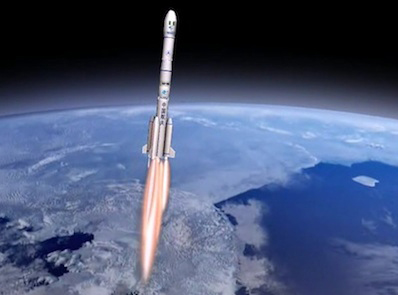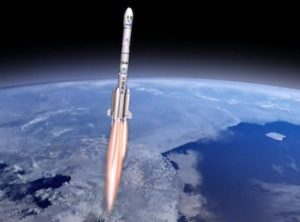
On December 19th at 1641 GMT, China successfully launched Nigcomsat-1R into geostationary transfer orbit (GTO) atop a Long March 3B rocket. The 5000-kg telecommunications satellite, commissioned by Nigeria, is a replacement for Nigcomsat-1, which failed on orbit in 2008.
A Nigcomsat-1R representative said on Monday that Nigcomsat-1R “will provide optimal and cost effective voice, data, video, Internet and application services solutions.” Nigcomsat-1R features 28 communication transponders, offering broadcasting services in C-band, Ku-band, Ka-band, and L-band over an expected 15-year lifespan.
The replacement satellite is based of the Chinese DFH-4 bus, and features several improvements over the original Nigcomsat, including more communication channels and spot beams. Nigcomsat-1R was provided to Nigeria free of charge by China Great Wall Industries Corporation.
Nigcomsat-1R is a key aspect of the Nigerian space program, which aims to develop the capacity to manufacture its own satellites domestically. Nigeria plans to use the new Nigcomsat to train Nigerian engineers and controllers on how to develop and operate a satellite. It is also expected to help address numerous national security concerns in Nigeria, including improving communications between authorities combating vandalism of its oil pipelines, which costs the country an estimated 600,000 barrels of crude oil daily.
Nigcomsat-1R is the eighth satellite based on the DFH-4 bus, developed by the China Academy of Space Technology. The successful launch of Nigcomsat-1R also represents the 17th successful satellite launch by China in 2011, which brings it to parity with the US in terms of total commercial launches.
The video below shows the Nigcomsat-1R launch.


















































































































![A trajectory analysis that used a computational fluid dynamics approach to determine the likely position and velocity histories of the foam (Credits: NASA Ref [1] p61).](https://www.spacesafetymagazine.com/wp-content/uploads/2014/05/fluid-dynamics-trajectory-analysis-50x50.jpg)



Leave a Reply